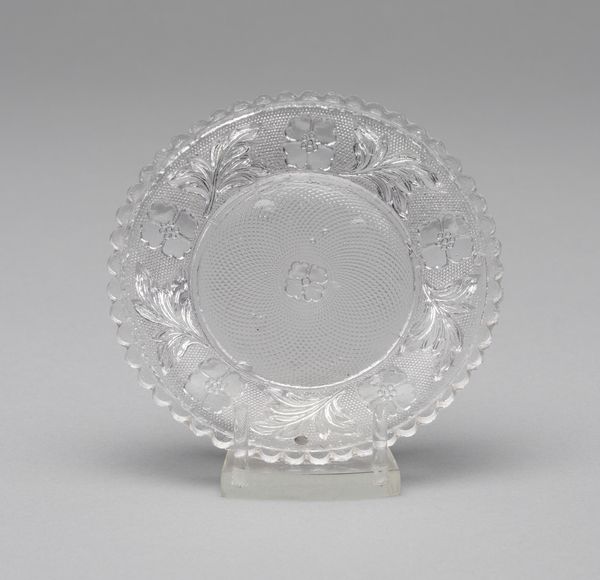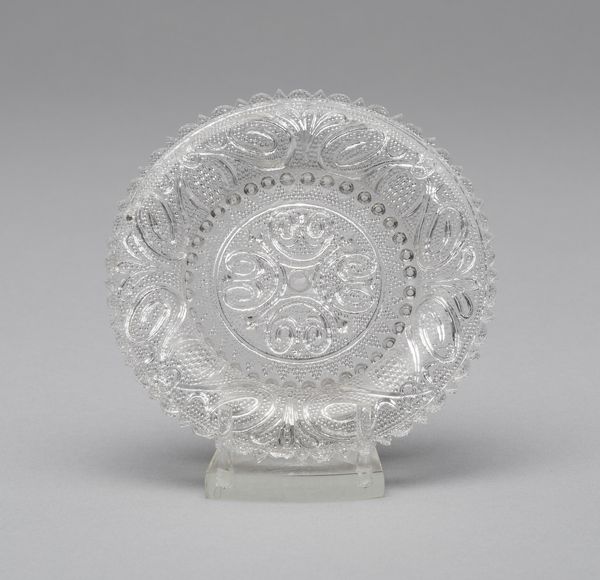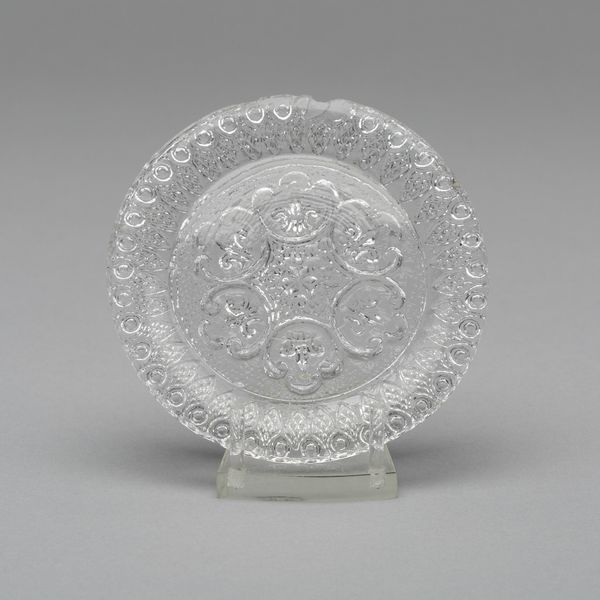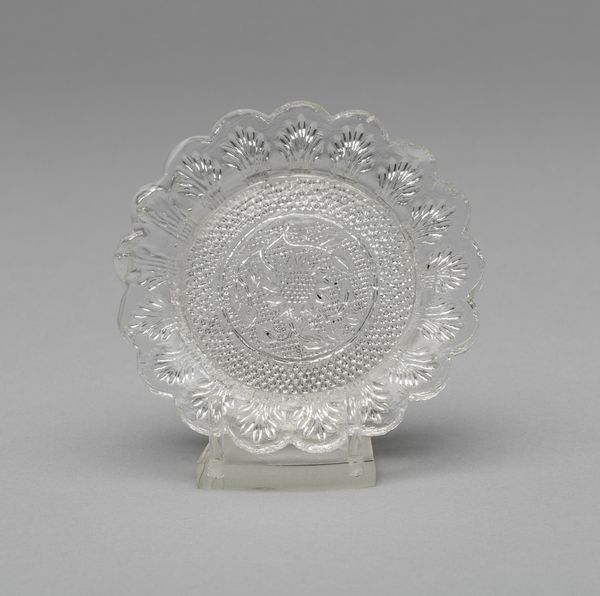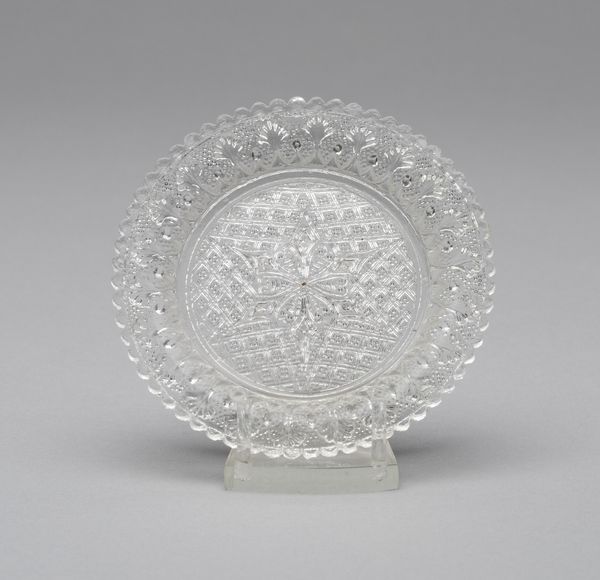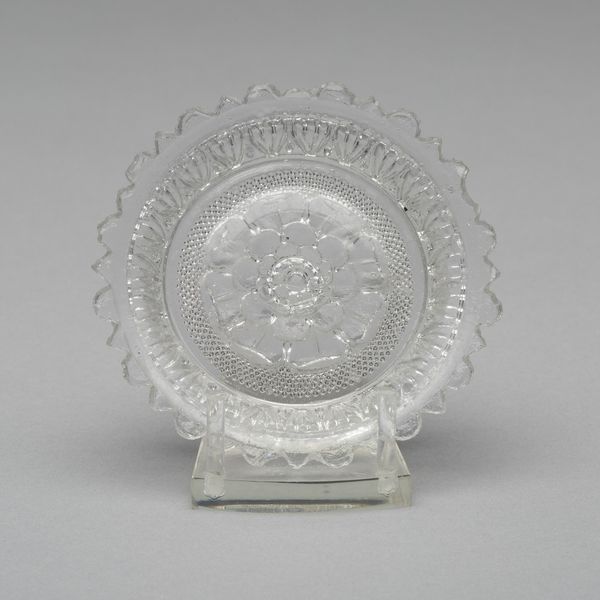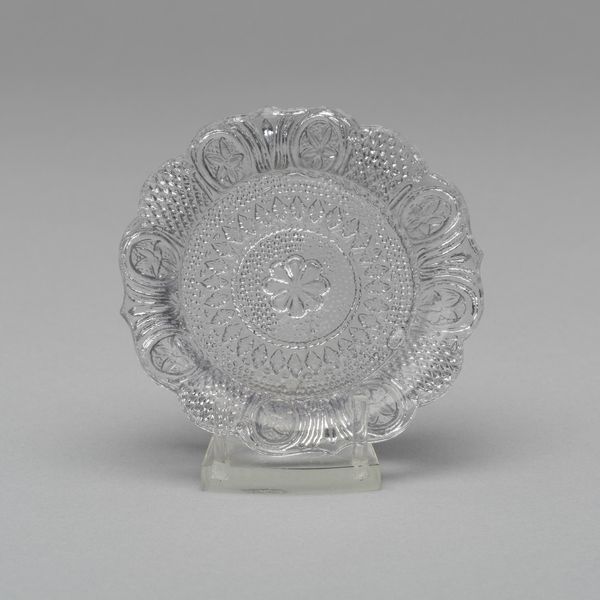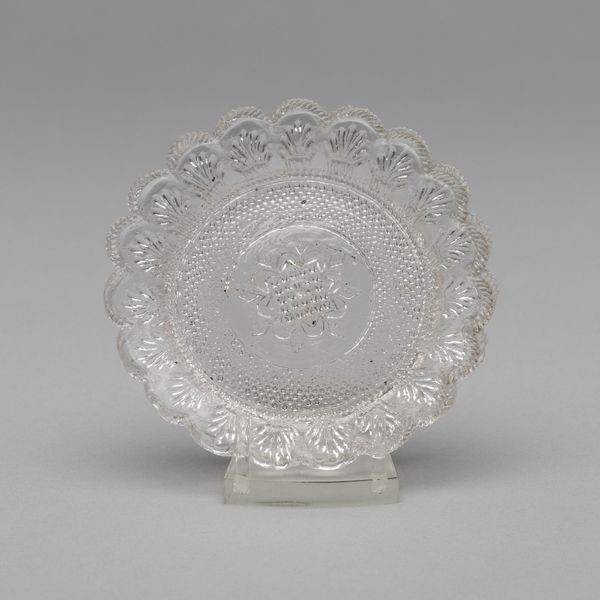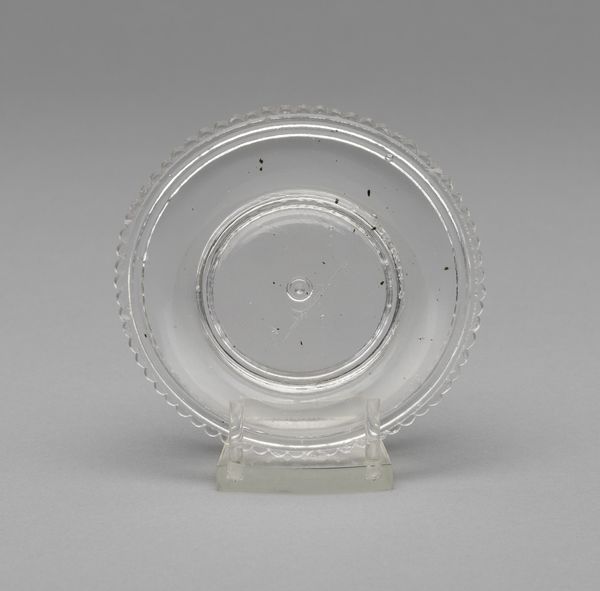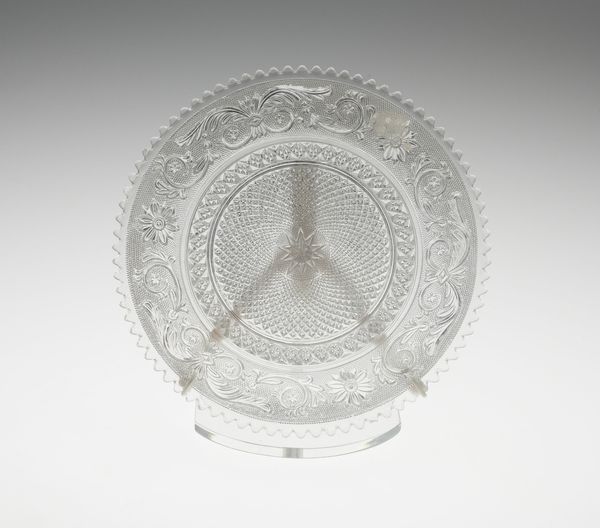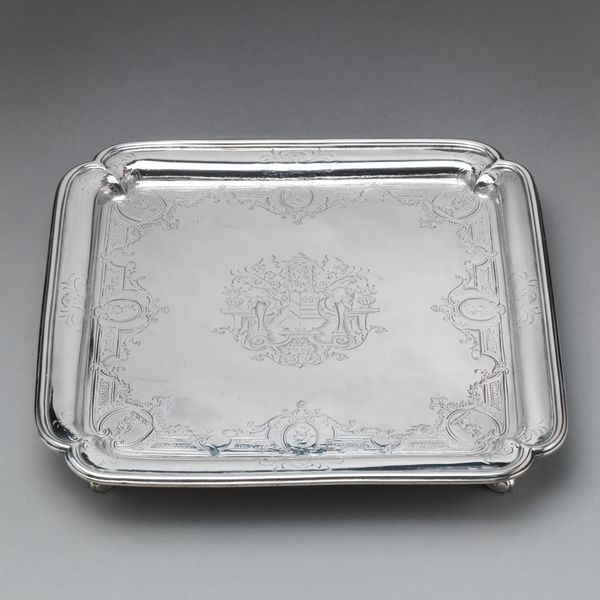
carving, glass
#
carving
#
landscape
#
glass
#
united-states
#
genre-painting
#
decorative-art
Dimensions: 27.9 × 40.6 cm (11 × 16 in.)
Copyright: Public Domain
Curator: Looking at this beautiful, subtly carved glass platter—titled "Knights of Labor"— dating roughly from 1870 to 1900, one can’t help but wonder about the social and industrial changes shaping America at the time. Editor: It gives an airy, dreamlike feeling at first glance. The delicate landscape scene rendered on clear glass creates a shimmering, almost ethereal quality, doesn't it? You feel the urge to pick it up, like handling a bit of frozen time, before reality distorts our view on the dreams of that late 19th-century America. Curator: Indeed. The very choice of glass is crucial. In viewing this object we must not overlook The Knights of Labor who emerged as one of the foremost labor organizations and whose very foundations shook established capitalist structure by including African Americans, immigrants, women, and unskilled workers in their fight for fair wages and eight hour work days. In other words, this platter, produced and intended for domestic display becomes charged with symbolism for an audience involved with social, political and industrial fermentations. Editor: Absolutely. The decorative art often reflects the zeitgeist more directly than, say, grand history painting, making everyday narratives central, especially for those previously excluded, to create objects expressing values and shared identities. To think about who purchased and displayed this… a potent act of affirming a particular allegiance during a time of deep division. I wonder about gender and consumerism and domestic display in this equation, don't you? Curator: Absolutely. This isn't merely a decorative object; it’s a material statement. The subtle carvings of the landscape and factories within highlight the intersection between nature and industry. Also the imagery could refer to a cooperative, pastoral social dream. A place where people, represented by these glass tableaus and displays can experience belonging in what otherwise may have seemed a foreign socioeconomic structure. Editor: Seeing the scene through a decorative lens offers a perspective on that complicated period of labor history, revealing the aesthetics and dreams of an evolving culture. We often ignore everyday artwork in telling the grand tales. Curator: By viewing artworks through that cultural lens, we gain access to many hidden perspectives! Editor: Precisely.
Comments
No comments
Be the first to comment and join the conversation on the ultimate creative platform.
